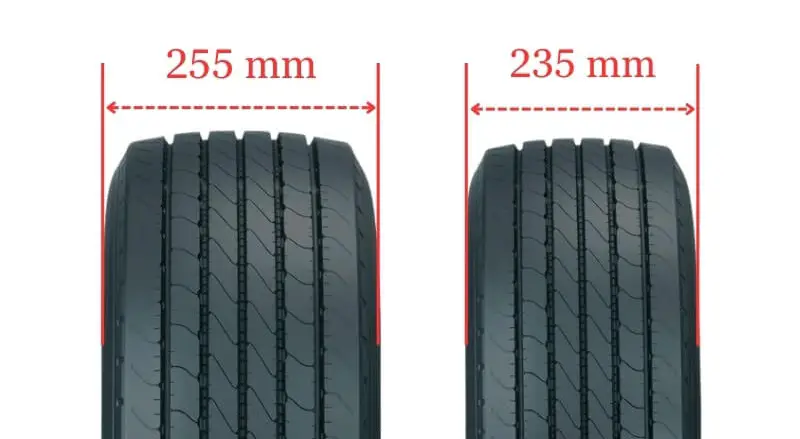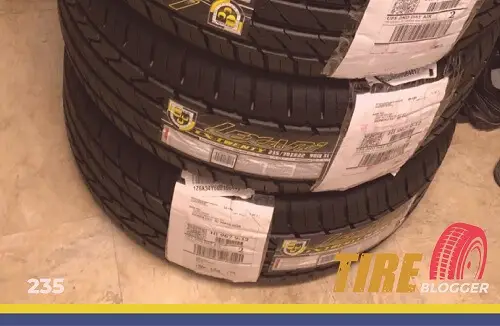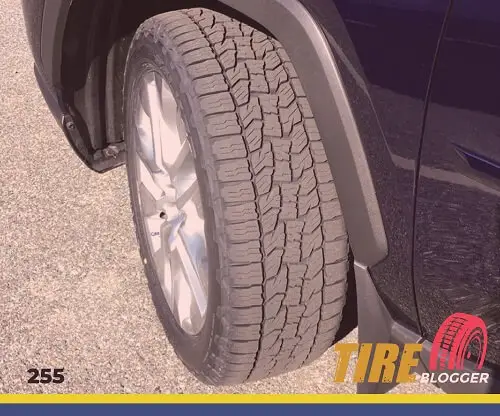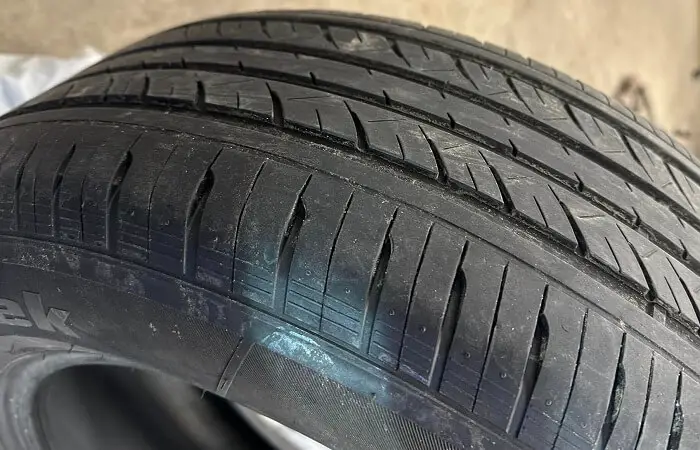235 vs 255 Tires

The primary difference between a 235 and 255 tire is the tread width, the 255 tire has 20mm wider tread than the 235 tire. A 235 tire has a width of 235mm, while a 255 tire is 20mm wider at 255mm. This equates to a 0.79 inch difference, with the 255 about 8.5% wider than the 235.
235 vs 255 Table
This table provides a clear, concise overview of the differences between two tire sizes, allowing for quick comparison.
| Tire Size 235 | Tire Size 255 |
|---|---|
| Narrower 9.25 inch tread width | Wider 10.04 inch tread width |
| Provides slightly better fuel efficiency | Marginally less fuel efficient |
| Exhibits even treadwear over time | May wear tread unevenly over time |
| Cuts through snow/ice a bit better | Additional traction in mud or dirt |
| Delivers nimble, responsive handling | Provides added stability at higher speeds |
| Absorbs road irregularities smoothly | Slightly better absorption of impacts |
| Lower profile aesthetic appearance | More aggressive, lifted visual stance |
| Quiet ride with minimal noise | Dampens vibrations well for smooth ride |
Ground Clearance
The slightly wider 255 tires will provide marginally more ground clearance than the 235.
This can benefit off-road driving or when navigating rough terrain, reducing the risk of scraping or damage from obstacles. However, the difference is relatively minor.

Gas Mileage
With a narrower tread and less rotational mass, 235 tires generally offer better fuel efficiency than 255 tires. This makes them preferable for daily driving and long trips where fuel economy matters.
The minimal extra width and weight of 255 has a small but measurable impact on efficiency.
Ride Comfort
Both widths provide a comfortable ride, with the 255 having a slight edge thanks to more air volume and sidewall height.
This allows it to better absorb impacts from bumps and road irregularities. However, the difference is subtle, and most drivers will find either size provides adequate comfort.
Aesthetics
The 255 has a somewhat wider, more aggressive visual stance, which some drivers prefer for the aesthetics.
However, subjectively, there is little significant difference in appearance between the two tire sizes. Both can look appropriate based on the overall vehicle design.

Handling & Stability
The 235 offers marginally quicker steering response and nimble handling on pavement.
But the wider 255 provides more stability and traction, which can be helpful on uneven roads or slippery conditions. Overall, either width provides responsive, stable handling for normal driving.
Noise & Vibration
With such a minor size difference, both tires generate the same interior noise and vibration levels.
The 255 is slightly better at dampening vibrations, but not in a substantially noticeable way. Expect a comparable ride quality.
Durability & Wear
Again, the difference between these two sizes is negligible regarding durability and treadwear.
The 235 may exhibit somewhat more even wear over time. Still, both provide many miles of use with proper maintenance and alignment.

Performance
For snow and ice, the 235 can cut through to the pavement a bit better. But the slightly wider 255 provides a tad more traction in deep mud or loose dirt. On balance, both perform well in adverse conditions.
Can I Replace 255 Tires With 235 Tires
Yes, you can replace 255 tires with 235 tires. The ideal rim width range for 255 tires overlaps with the range for 235 tires, making the switch possible.
To maintain optimal performance and accurate speedometer readings, it’s essential to select new tires with an aspect ratio and rim diameter that match your current setup.
If an exact match is not possible, ensure the overall diameter difference remains within a 3% threshold.
Can I Put 235 Tires on 255 Rims
Yes, you can put 235 tires on rims designed for 255 tires. The ideal rim width range for 255 tires (8.0-9.5 inches) overlaps with the range for 235 tires (7.0-8.5 inches), ensuring proper fitment.
Can I Put 255 Tires on 235 Rims
Yes, you can put 255 tires on rims designed for 235 tires. The ideal rim width range for 235 tires (7.0-8.5 inches) overlaps with the range for 255 tires (8.0-9.5 inches), ensuring proper fitment.

Difference Between 235 and 255 Tires
The main difference between 235 and 255 tires is the section width, with 255 being 20mm wider than 235. This difference in width can impact various aspects of tire performance and handling characteristics.
Can I Replace 235 Tires With 255 Tires
Yes, you can replace 235 tires with 255 tires. The ideal rim width range for 235 tires (7.0-8.5 inches) overlaps with the range for 255 tires (8.0-9.5 inches), making the switch possible.
As you explore new tire options, remember that the aspect ratio and rim diameter should be consistent with your current configuration.
If an exact match is not possible, strive to keep the overall diameter difference under 3% to avoid compromising speedometer accuracy and vehicle performance.
Our Observation
When comparing tire sizes 235 and 255, I don’t see any major differences that would sway me strongly toward one or the other. In my opinion, both offer comparable real-world performance for daily driving and moderate off-road use.
The 255 provides slightly better ground clearance and stability, but the difference is quite minor. And the 235 delivers better efficiency and handling, though again, not in a substantial way.
I would base my choice on the overall vehicle design and aesthetics rather than minor performance variances. Either size can likely do the job for most drivers without major compromises. The key is choosing high-quality, appropriate tires for your specific vehicle.

Meet Caitlin McCormack, a Tire Size Expert and Blogger Passionate About Everything Related to Tires. With Years of Experience in the Tire Industry, Caitlin Has Become an Expert in Tire Sizes and Their Impact on Vehicle Performance.
